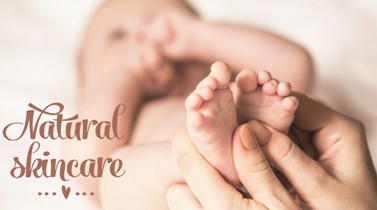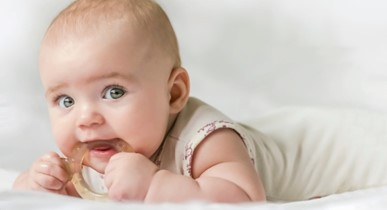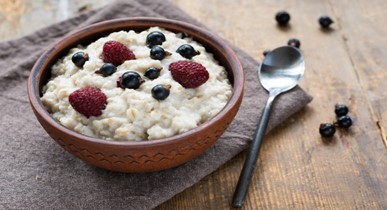The amazing race of conception

Heroic distances, daunting obstacles and fierce competition — the conception journey defies the odds. In fact, as Dr Andrew Murray, explains it’s a miracle any of us are here at all.
In my role as a fertility specialist, I suppose I get quite a skewed view of the world when it comes to conception and pregnancy. From the moment we are taught about the birds and the bees, then especially around subsequent first brushes with sexuality, we are often made to feel terrified about the possibility of an unwanted pregnancy. It all seems so risky!
By the time couples come to see me they are often startled by the statistics relating to fertility. One in five couples experience infertility (no conception after 12 months of unprotected intercourse) and the well-worn phrase ‘biological clock’ is at the forefront of their minds. Even so, knowledge of the odds of successful conception is not high. The chance of conceiving a baby per month at age 35 is about 15%, by 40 it’s around 5%, and by 45 only 1%.
Man versus wild
When you examine on a microscopic level what actually has to go right, it amazes me any of us are here at all! The following is a description of the incredible journey that is conception.

To tell this story, imagine that instead of sperm we have millions of tiny Bear Grylls. If we could enlarge a sperm to the actual life size of Bear Grylls, the distance he would have to swim is roughly equivalent to the width of the Atlantic Ocean. Not only that, but he’d only have 12 to 24 hours to find his prize, the egg, as that is how long the egg will survive unless it is fertilised.
The journey is not only a matter of distance. There are many obstacles to overcome. Sperm like an alkaline environment, so ejaculatory fluid has a high pH. From the moment of ejaculation they are being dropped off into hostile territory. The vagina is acidic, so almost immediately a fair number of our adventurers are taken out of the equation by low vaginal pH.
Most of the time the cervix is not particularly receptive to any invaders including sperm, so the cervical secretions are often thick and tacky and act as a barrier. However, as oestrogen levels start to rise, and during the middle of her cycle when a woman ovulates (releases her egg), the cervical secretions become thinner and stretchy. It is almost like they send down little mucous ropes for the sperm to swim up. For a brief period of time, the doors to the cervix are open.
Wipeout
So perhaps, out of the initial several million Bear Gryllses who set out on this race, a few thousand make their way into the cervical canal. The cervical canal is a formidable place. There are blind alleys and crypts all the way along and it is lined by white blood cells ready to repel any invaders. I imagine it must be a little like one of those initiation ceremonies at American universities, where the bullies form a line with the newbies running through the gauntlet.
Those sperm that make it through the cervical canal and into the uterus now number in the hundreds. Within the uterus itself are further white blood cells to dodge. Most women have two ‘exits’ for the sperm, a left and right tubal ostium – that is where the fallopian tubes join the uterus. So it’s now a 50/50 chance, does he go left or right? Which one might the egg be in? Half of the survivors so far are doomed to find no egg.
Once in the fallopian tube we are now talking about tens of sperm. In the meantime, what is happening at the other end of the ‘reproductive gauntlet’?
The numbers game
In the ovaries, from even before a female is born, are all the eggs she will ever have. There are about eight million when an unborn baby girl is at 28 weeks gestation, but by the time she is born, there are about one to two million. By puberty – 400,000 and by age 35 around 25,000 eggs remain. This loss of eggs is due to a normal process called apoptosis. Without it cells become immortal and keep dividing and eggs just happen to be very good at apoptosis.
Of the surviving eggs, each month just before a woman’s period, the next wave of eggs are called up for duty. On average 10-12 are recruited. The message to get ready is by no means a simple one. Like a CEO sending out memos to the staff, the pituitary gland residing in the brain sends out messages in the form of the hormone FSH (follicle stimulating hormone), which makes its way to the ovaries. Within the ovaries are tiny containers called follicles each containing an egg, along with some support cells. The follicles have receptors on their surface for FSH, and start to grow in response to this signal.
Think of the follicles, all lined up like athletes at the beginning of the 110 metre hurdles; they all start off running hard, but only one can cross first. It’s the same way inside the ovary, one of the follicles establishes dominance, and provided there is a normal hormonal balance, will go on to release its egg.
Once released, the egg will hopefully be swept up by the ends of the fallopian tube. These are quite pretty structures, the ends look a lot like a sea anemone. The egg is transported along the fallopian tube wall on tiny structures called cillia. These are like little bristles that move the egg along on what is really a fantastically organised biological escalator.
Now, the egg is not sitting there in the nude. It is surrounded by a cloak of cells called the cumulus that provide important chemical signals for the sperm and egg. Once the egg is found by the sperm they all race to get through the cloak to their prize underneath. Several try, but only one can win.
Line honours
Once the ‘winner’ has penetrated the outer layer of the egg shell a unique reaction occurs hardening the egg shell so that no other sperm can get through. In the meantime the sperm releases its genetic information to subsequently be combined with that of the egg.
This is the part that amazes me. When you think of the millions of pieces of genetic code that combine to form the genes which in turn give instructions for the cells in our bodies, it is incredible that two distinctly separate individuals can have these combined and the information not get scrambled up. Of course, quite often critical pieces of information are either copied incorrectly, inappropriately duplicated, or missed out altogether.
This is why even though fertility treatment might assist in getting the egg and sperm together, what happens next is still up to nature. If the information is bad, the subsequent embryo will either fail to implant, or more commonly miscarry. As women get older the number of eggs in the ovaries with pre-existing genetic abnormalities is increasing, which is why it gets harder to conceive as the years pass.
The fertilised egg then starts to divide roughly 20 hours later, initially two cells, then four, then eight by day three, and so on. By day five it will hold over 250 cells, and is now known as a blastocyst.
Whilst all this is going on the uterus itself has been busy. In the first half of the menstrual cycle, the lining of the uterus (endometrium) has been thickening up – basically making a nice soft bed for the embryo to implant on to. After ovulation, during the time the egg and sperm are hopefully finding each other in the fallopian tube, the ovary produces progesterone. This stops the lining getting too thick, but also encourages changes within the lining in preparation for the embryo. The endometrium becomes enriched with nutrients and also forms welcoming receptors on its surface for the embryo to attach to. These receptors act like anchors, and are only on show for about 18 hours, so it’s critical they’re displayed at the correct time when the blastocyst finally makes it to the uterus. Once attached the blastocyst establishes a blood supply with the endometrium and begins developing into a foetus. The next 40 weeks are another story…
It is amazing that all of this happens in just five days. It really is a beautifully intricate system and it’s awe inspiring to be involved in an area of medicine where we get to observe some of these processes outside of the body.
Dr Andrew Murray is Medical Director of Fertility Associates Wellington. He is also a Senior Lecturer at Wellington School of Medicine and a consultant obstetrician and gynaecologist at Wellington Hospital.
Photography: Alixann Loosle, alixannlooslephotography.com

AS FEATURED IN ISSUE 29 OF OHbaby! MAGAZINE. CHECK OUT OTHER ARTICLES IN THIS ISSUE BELOW

















